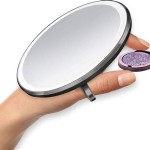Mirror Your iPad to a Samsung Smart TV Wirelessly: A Comprehensive Guide
Mirroring an iPad screen to a Samsung Smart TV wirelessly allows users to display content such as photos, videos, presentations, and apps from the iPad onto the larger TV screen. This functionality is beneficial for various purposes, including entertainment, education, and professional presentations. The process involves utilizing wireless connectivity technologies such as AirPlay (for compatible models) and screen mirroring protocols. This article provides a detailed examination of how to wirelessly mirror an iPad to a Samsung Smart TV, outlining the necessary steps, troubleshooting tips, alternative methods, and compatibility considerations.
Understanding Wireless Mirroring Technologies
Wireless mirroring between an iPad and a Samsung Smart TV relies on several technologies that enable the transmission of audio and video signals without physical cables. The primary technologies involved are AirPlay (primarily for Apple devices, supported by some Samsung TVs) and screen mirroring based on standards like Miracast or Wi-Fi Direct. Understanding these technologies is crucial for ensuring a successful connection and optimal performance.
AirPlay: AirPlay is Apple's proprietary wireless streaming protocol that allows users to stream audio and video content from Apple devices (such as iPads, iPhones, and Macs) to AirPlay-compatible devices, including certain Samsung Smart TVs. AirPlay 2, the updated version, offers enhanced features such as multi-room audio and improved buffering. To use AirPlay, both the iPad and the Samsung Smart TV must be connected to the same Wi-Fi network.
Screen Mirroring (Miracast/Wi-Fi Direct): Screen mirroring, often implemented using Miracast or Wi-Fi Direct, enables direct wireless connections between devices without requiring an intermediary Wi-Fi network. Miracast is a standard that allows devices to discover each other and establish a peer-to-peer connection for screen mirroring. Wi-Fi Direct functions similarly, allowing devices to connect directly to each other without a router. Samsung Smart TVs generally support these screen mirroring protocols, although the specific terminology and implementation may vary.
Regardless of the technology, a stable Wi-Fi connection is paramount. Interference from other wireless devices, network congestion, or weak signal strength can lead to buffering, lag, or connection drops. Optimizing the Wi-Fi network and ensuring that both devices are within a reasonable range of the router are important steps.
Steps to Mirror Your iPad to a Samsung Smart TV
The specific steps for mirroring an iPad to a Samsung Smart TV can vary slightly depending on the iPad's iOS version and the Samsung TV's model and software. However, the general process remains consistent. The following steps outline the process using both AirPlay and screen mirroring.
Using AirPlay:
- Ensure Compatibility: Verify that your Samsung Smart TV supports AirPlay. Not all Samsung TV models have built-in AirPlay support. Check the TV's specifications or consult the user manual to confirm compatibility.
- Connect to the Same Wi-Fi Network: Ensure that both your iPad and the Samsung Smart TV are connected to the same Wi-Fi network. This is a mandatory requirement for AirPlay to function correctly.
- Access Control Center on Your iPad: Swipe down from the top-right corner of the iPad screen (or swipe up from the bottom on older models) to open the Control Center.
- Tap the Screen Mirroring Icon: In the Control Center, locate and tap the "Screen Mirroring" icon. It typically resembles two overlapping rectangles.
- Select Your Samsung TV: A list of available AirPlay devices will appear. Select your Samsung Smart TV from the list.
- Enter the AirPlay Passcode (If Required): If prompted, enter the AirPlay passcode displayed on your Samsung TV screen into your iPad. This is a security measure to prevent unauthorized mirroring.
- Start Mirroring: Once connected, your iPad screen will be mirrored on the Samsung Smart TV. You can now display content such as apps, photos, videos, and documents on the larger screen.
- Adjust Display Settings (Optional): On some Samsung TVs, you may be able to adjust display settings such as aspect ratio and zoom level to optimize the mirrored image.
- Stop Mirroring: To stop mirroring, return to the Control Center on your iPad, tap the "Screen Mirroring" icon, and select "Stop Mirroring."
Using Screen Mirroring (Non-AirPlay Models):
- Prepare Your Samsung TV: On your Samsung Smart TV, navigate to the "Screen Mirroring" or "Smart View" feature. The exact name and location may vary depending on the TV model. Consult your TV's user manual for specific instructions.
- Enable Screen Mirroring on the TV: Typically, the TV will display a screen indicating that it is waiting for a connection. Ensure that the screen mirroring feature is actively enabled.
- Access Control Center on Your iPad: Swipe down from the top-right corner of the iPad screen (or swipe up from the bottom on older models) to open the Control Center.
- Tap the Screen Mirroring Icon: In the Control Center, locate and tap the "Screen Mirroring" icon. It typically resembles two overlapping rectangles.
- Select Your Samsung TV: A list of available devices will appear. Select your Samsung Smart TV from the list. Note that the TV may be listed under a name that is different from its actual model number; it might use a generic name like "Samsung" or a variation thereof.
- Confirm the Connection: On your Samsung TV, you may be prompted to confirm the connection from your iPad. Use the TV remote to accept the connection request.
- Start Mirroring: Once connected, your iPad screen will be mirrored on the Samsung Smart TV.
- Adjust Display Settings (Optional): As with AirPlay, you may be able to adjust display settings on the TV to optimize the display of the mirrored content.
- Stop Mirroring: To stop mirroring, return to the Control Center on your iPad, tap the "Screen Mirroring" icon, and select "Stop Mirroring." Alternatively, disconnect from within the Samsung TV's screen mirroring settings.
Troubleshooting Common Issues
Despite following the correct steps, users may encounter issues during the mirroring process. Addressing these problems effectively can ensure a smooth and reliable wireless connection.
Connection Problems:
- Ensure Devices are on the Same Wi-Fi Network: This is the most common cause of connection failures. Double-check that both the iPad and the Samsung TV are connected to the same Wi-Fi network and that the network is functioning correctly.
- Restart Devices: Power cycling both the iPad and the Samsung TV can resolve temporary software glitches or network issues. Turn off both devices, wait a few seconds, and then turn them back on.
- Check Wi-Fi Signal Strength: A weak Wi-Fi signal can cause connection problems. Move the devices closer to the Wi-Fi router or consider using a Wi-Fi extender to improve signal strength.
- Update Firmware: Ensure that both the iPad and the Samsung TV have the latest firmware updates installed. Updates often include bug fixes and performance improvements that can resolve compatibility issues.
- Disable Bluetooth: In some cases, Bluetooth interference can affect Wi-Fi performance. Try disabling Bluetooth on both devices to see if it resolves the connection problem.
Performance Issues (Lag, Buffering):
- Reduce Network Congestion: Too many devices actively using the Wi-Fi network simultaneously can cause congestion and performance problems. Disconnect unnecessary devices from the network to free up bandwidth.
- Close Background Apps: Closing unnecessary apps running on the iPad can free up system resources and improve mirroring performance.
- Adjust Video Quality: If you are mirroring high-resolution video content, try reducing the video quality to see if it improves performance. This can be done within the video settings or by adjusting the output resolution on the iPad.
- Use a 5 GHz Wi-Fi Network: If your router supports it, connect both devices to the 5 GHz Wi-Fi network instead of the 2.4 GHz network. The 5 GHz band generally offers faster speeds and less interference.
Audio Problems:
- Check Volume Levels: Ensure that the volume is turned up on both the iPad and the Samsung TV.
- Check Audio Output Settings: Verify that the audio output on the iPad is set to the Samsung TV. This can usually be done in the system settings or within the app you are using for mirroring.
- Restart the App: If you are experiencing audio problems with a specific app, try restarting the app to see if it resolves the issue.
Image Distortion or Incorrect Aspect Ratio:
- Adjust Display Settings on the TV: Use the Samsung TV remote to access the display settings and adjust the aspect ratio, zoom level, and other display parameters to optimize the image.
- Check iPad Display Settings: On the iPad, check the display settings to ensure that the resolution and aspect ratio are appropriate for the TV.
By systematically addressing these common issues, users can often resolve mirroring problems and ensure a stable and high-quality wireless connection between their iPad and Samsung Smart TV.

4 Methods How To Mirror An Ipad A Samsung Tv In 2024

Top 4 Methods To Mirror Ipad Samsung Tv

Top 4 Methods To Mirror Ipad Samsung Tv

4 Methods How To Mirror An Ipad A Samsung Tv In 2024

How To Mirror An Ipad A Samsung Tv

Best Ways To Mirror Ipad Samsung Tv

Top 4 Methods To Mirror Ipad Samsung Tv

How To Connect An Ipad A Tv Or Display Airplay Adapter

How To Screen Mirror Ipad Samsung Tv

How To Mirror Ipad Iphone Samsung Tv








